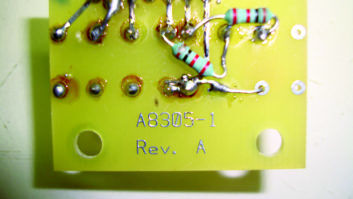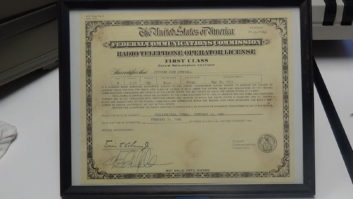
Fig. 1: Avoid constrictive ducting on transmitter outputs. We’ll focus on some transmitter site issues in this column.
Allen Branch does contract work and handles engineering for a 10-station owner in Atlanta. He was called to work on a contract client’s Harris/Gates FM-3H FM transmitter.
The rig was running fine but ate a lot of 4CX250B driver tubes, according to the station owner. Allen investigated and found the BE FX30 exciter pumping out 12 Watts into the driver tubes. Eimac specs say to limit the drive to 2 watts for this tube.
It was a simple screwdriver fix to turn the exciter drive down. Think of the money he saved the station.
* * *
It’s not only the driver tubes that will roast in the transmitter shown in Fig. 1.
That sharp bend on the blower output ducting is constrictive and will shorten final tube life, too. When the transmitter air is not exhausted properly, the heat takes its toll on components too.
Heat can cause problems such as cracked wire insulation and the resulting shorts, or broken bleeder resistors that are no longer protecting you against accidental shock.
A better choice would be a hood mounted a few inches above the transmitter to direct the air outside, as shown in Fig. 2.

Fig. 2: A hood over the transmitter exhaust port is a better idea, as seen above the Harris transmitter, center. * * *
Contract engineer John Ragsdale was called to a station with high reflected power on its FM. Things didn’t smell right in the transmitter building, either, so John began to investigate.
Fig. 3 shows what he found when he removed the transmitter input to the RF switch!
As John looked further, he found that the switch had never been wired to the transmitter interlocks. No one confessed to switching the switch hot, but the damage was done. Fig. 4 gives you an idea of what the inside of a switch looks like after it’s been smoked.
After the switch was repaired, John convinced the owner to allow him to connect the transmitter interlocks to the switch contacts properly.
A common mistake is to forget to connect the interlocks. New transmitter installations require a real investment in time, and an engineer’s focus is to get things operational as soon as possible. If you left the connection of the interlock contacts for another day, make that other day today.
* * *
Like many readers, you may supplement full-time income by doing side work, or perhaps you have a full-time contract engineering business.
Either way, running a business can be a pain, especially if you’ve completed work but not been paid.
I’m not a tax accountant, so check this tip out with your tax professional; but I’m hearing about more and more engineers getting stiffed by deadbeat managers and owners. It’s not right, and there is a simple way to fight back.

Fig. 3: Switching a transfer switch ‘hot’ causes this kind of damage. Years ago, when I was partner in a contract engineering business, we bought most of our equipment from Bill Bingham’s Northeast Broadcast Lab, which long since has been absorbed into the Harris family. (Bill and his wife Mary Lou are enjoying retirement in Florida.)
I was struggling with a deadbeat customer and Bill offered a suggestion to help me get my money. The technique worked for me several times. It’s particularly appropriate for this time of year.
When someone owes you money and simply will not pay, send them a letter asking for their social security number, noting that you intend to file an IRS 1099-Misc, a miscellaneous income form, for the amount they owe. These must be filed next month, in January. The form is easy to fill out though your business must have a federal tax ID number.
Bill said the simple threat of a 1099 often was all it took to get paid.

Fig. 4: Inside a burned RF switch. RF has no mercy. Wire those interlocks. It dismays me to hear managers and owners belittle their engineers. The dishonest ones who don’t intend to pay you anyway figure you won’t do anything about it. They are right. Most of us are engineers, not collection experts. But filing the form lets them know you will not be bullied; they can either pay you or pay the tax on the money to the IRS. Most people don’t want to deal with the IRS and will find it easier to write you a check.
If the deadbeat won’t give you a social security number, that’s fine; just write “refused” on the 1099. Don’t delay, because this can only be filed for money owed for 2009.
Yes, if the guy won’t pay you and you file the form, you won’t get any money, but you will have the satisfaction of knowing they will be taxed on this income.
This is similar to the forms a mortgage company sends after someone defaults on a loan. Think you’re going to walk away from a mortgage? Guess again! The amount on the 1099 will be the difference between the foreclosed sale amount and what was owed on the mortgage.
In my experience, most managers or owners would find the money. Our company used this technique three times and was paid twice. The third guy paid the tax … but never messed with engineers again.
Now if the station is barely getting by, I wouldn’t take this step; there’s an unwritten rule about engineers doing some charity work, and I’m a big believer in that.
But if you’re being strung along and it’s obvious the client is making no effort to pay, you might try this technique. Good luck and let me know if you do.
John Bisset marked his 40th year in broadcasting recently. He is international sales manager for Europe and Southern Africa for Nautel and a past recipient of the SBE’s Educator of the Year Award. Reach him at[email protected]. Faxed submissions can be sent to (603) 472-4944.
Submissions for this column are encouraged and qualify for SBE recertification credit.












